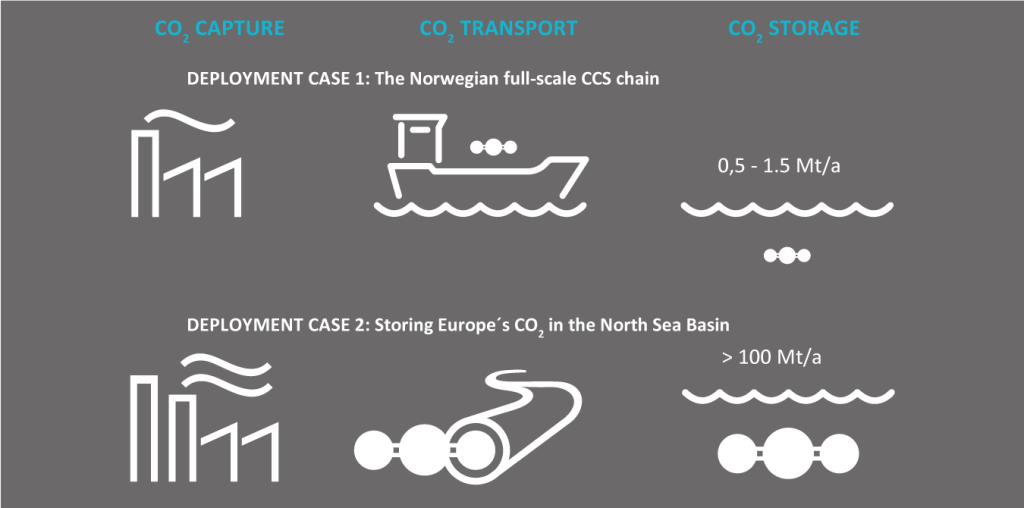Bloggers: Alvar Braathen, Section of Geology and Geophysics, UiO, Mona Mølnvik, Centre director, NCCS, SINTEF Energy Research og Egil Tjåland, Department of Petroleum Engineering and Applied Geophysics, NTNU
History was made on 5 October when the world got its new climate agreement. With enough countries signing up to the agreement, it was ratified and is therefore binding.
On this date, President Obama stated: “History may well judge it as a turning point for the planet”.
With the new climate agreement which comes into effect on 4 November, the world is committed to cutting its greenhouse gas emissions. All countries must create their own national plans for cutting emissions – and then report on their progress. The goal is to prevent the global temperature rising by more than 2 degrees by the year 2100.
An agreement with great potential
In his speech, Obama also pointed out that the climate agreement gives trade, industry and research an opportunity to develop new technology capable of saving the planet as we know it.
We have high ambitions in our new Norwegian CCS Research Centre (NCCS). CCS stands for “carbon capture and storage”. Research into the capture and storage of CO2 may be a powerful weapon against climate change, and NCCS is expected to give Norway and the world a scientific edge.
CCS involves capturing CO2 emissions from industrial processes and power generation and placing them in permanent storage. CCS will help cut the CO2 emissions which affect both the air we breathe and the planet’s climate.
CCS among the top three
According to the International Energy Agency (IEA), CCS is the third most effective measure humanity can take to minimise global warming.
CCS is nothing new. Examples of its current use are:
- Full-scale CCS at coal-fired power stations in Canada (Boundary Dam Carbon Capture Project).
- CO2 separated from natural gas at the Sleipner field in the North Sea has been stored beneath the seabed since 1996.
- At the LNG plant at Melkøya in Hammerfest, CO2 is separated from natural gas, transported back to the field and re-injected – an industrial project dating back to 2008.
The Norwegian Government recently decided to allocate NOK 360 million to the development of three important CCS projects in Norway.
For those of us who have long been involved in CO2 research, the fact that such industrial projects are to receive support comes as great news.
You may well ask: Do we need more research into this? Can’t we just get on with it?
Do we need research and NCCS?
4 November – the same day the climate agreement takes effect – marks the kick-off at NCCS, our big, new research centre.
As we see it, the world needs NCCS. Why?
Well, because some of the world’s foremost CCS research groups are involved in the project. And in collaboration with ambitious industries we will tackle the greatest challenges and barriers to achieving full-scale CCS. Research reduces the risk and makes the solutions more affordable. At NCCS we will:
- Highlight and develop new generations of CO2 capture technology suitable for power generation and industrial processes.
- Study, among other things, more efficient methods of transport with major cost-cutting potential.
- Develop methods of secure CO2 storage and new measuring techniques.
- Look at the many possibilities for storing huge amounts of CO2 in the North Sea.
- Train students in CCS at MSc and PhD level, who will be able to use their cutting-edge abilities in future work, whether in industry or as research scientists.

1.The Norwegian full-scale CCS chain capturing CO2 from industrial sources in Norway and transporting it by ship for storage on the Norwegian continental shelf (NCS)
2.Storing Europe’s CO2 in the North Sea Basin capturing CO2 from a variety of sources in Europe and transporting it via a pipeline network to Norwegian storage sites.
We have high ambitions for our new research centre, which will operate for eight years, with about 30 research and industrial partners and a budget of more than NOK 400 million. This is a major effort!
Politicians are bound by the climate agreement, and so are we researchers. Keep up-to-date with NCCS’s work at www.nccs.no.
Key facts: Norwegian CCS Research Centre/NCCS The project is funded by the Research Council of Norway Duration: 2016-2024 SINTEF Energy Research will be in charge of the programme, in close collaboration with the Norwegian University of Science and Technology and the University of Oslo. The project involves about 15 industrial partners and 15 research partners.









Comments
No comments yet. Be the first to comment!